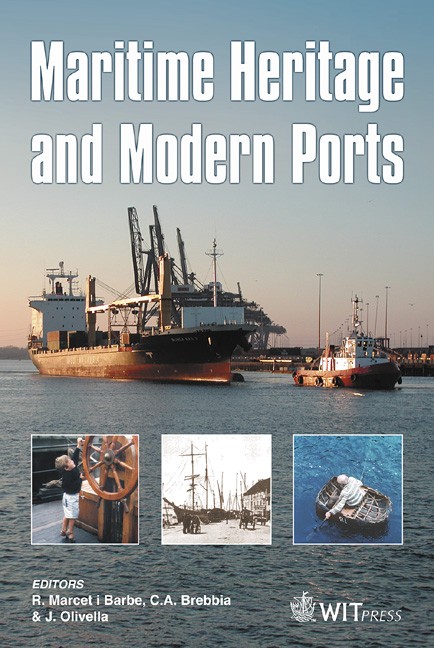A Case-based Stowage Planning System
Price
Free (open access)
Transaction
Volume
79
Pages
10
Published
2005
Size
754 kb
Paper DOI
10.2495/MH050341
Copyright
WIT Press
Author(s)
S. Nugroho
Abstract
The computer support in stowage planning today is limited to the calculation of the state of the ship, e.g. concerning the ship's stability and strength or hazardous cargoes check. Stowage planners have to perform the core of the planning process manually. The growing size of container ships and the tight shipping schedule illustrate the increasing burden to the planners and its risk. A new method for semi-automating the process of stowage planning, called Casestow, is proposed. Casestow encompasses the difficulty of knowledge acquisition of stowage planning. It assists the planner in creating a stowage plan by remembering how a similar planning problem was solved. Keywords: stowage planning, container shipping, case-based reasoning, knowledge acquisition problems. 1 Introduction Stowage planning problems are as old as the history of the ship itself. It is the task to allocate containers to be loaded to slots on board the ship. In spite of the advancement of the information technology, where computers have become indispensable to conduct daily planning tasks, the core process of planning, namely creating the plan itself, is still performed manually. The planner still has to create the plan himself, then when the plan is finished he checks if the criteria are met or not. Today stowage planning software provides powerful modules which enable the planner to obtain information on the state of the ship and its cargoes concerning the stability, strength, dangerous cargoes, crane split, draught, trim and visibility check. Those modules expedite the calculation tasks. If the plan shows that the ship does not have a sufficient static stability, for example, the user is not assisted with any help as to what to do, which containers have to be
Keywords
stowage planning, container shipping, case-based reasoning, knowledge acquisition problems.





